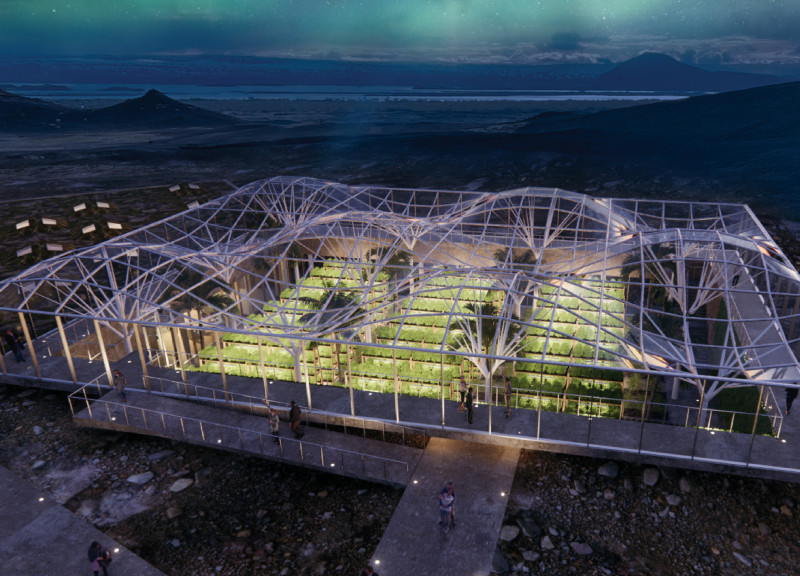5 key facts about this project
The Myvatn Green Box is an architectural project that embodies a thoughtful integration of design, functionality, and sustainability within its northern Icelandic context. This facility serves as a multi-purpose space that encourages interaction with both the environment and the community. At its core, the project represents a commitment to sustainable practices while providing a functional space for visitors and locals alike. The design seeks to blend seamlessly with the unique landscape of Myvatn, where natural features such as geothermal areas and volcanic formations dominate the scenery.
The Myvatn Green Box serves several key functions, including a greenhouse for sustainable agriculture, a restaurant prioritizing local cuisine, and educational spaces dedicated to teaching visitors about eco-friendly practices. The architectural design allows for a fluid connection between indoor and outdoor areas, encouraging users to engage with nature while enjoying the benefits of modern amenities. This versatility in function reflects a broader trend in contemporary architecture where spaces are designed to adapt to the evolving needs of their users.
One of the most important aspects of the Myvatn Green Box design is its emphasis on sustainability and the utilization of local resources. The architectural materials selected for the project play a crucial role in both its aesthetic quality and environmental impact. Concrete forms the structural foundation, providing strength and durability while blending with the rugged surrounding terrain. Extensive use of glass allows natural light to permeate the interiors, enhancing the user experience and reducing energy consumption. Timber is employed in communal areas, adding warmth and a connection to traditional building practices. Additionally, recycled materials, including reclaimed steel, are incorporated, further emphasizing the project's commitment to sustainability.
The spatial organization of the Myvatn Green Box is meticulously planned to facilitate ease of movement and interaction. Visitors enter through a glass corridor that leads directly into the greenhouse, where they are introduced to a variety of plant life representing sustainable agricultural practices. Adjacent to this space is the restaurant, designed to offer expansive views of the Icelandic landscape while serving seasonal, locally sourced dishes. The architectural layout maximizes both functionality and aesthetic appeal, creating an inviting environment for all users.
Unique design approaches are evident throughout the Myvatn Green Box. The extensive use of modular construction techniques allows for flexibility in programming, enabling spaces to be easily reconfigured for different events or seasonal changes. The integration of geothermal systems for heating and cooling not only meets the building's energy needs but also aligns with Iceland's rich geothermal resources. Moreover, the inclusion of green walls and roofs within the architectural design supports biodiversity and encourages ecological resilience.
In the wider context of architecture, the Myvatn Green Box stands as a testament to the potential of sustainable design. It demonstrates how contemporary architecture can harmonize with nature while serving the functional needs of communities. The project reflects an understanding of the local environment and an intention to foster awareness around sustainability among visitors and residents alike.
For readers interested in exploring the Myvatn Green Box in greater detail, reviewing the architectural plans, sections, and design ideas behind this project will provide deeper insight into its unique features and methodologies. Engaging with the project's presentation can broaden understanding of how thoughtful architectural design can contribute positively to environmental and social outcomes.






















































